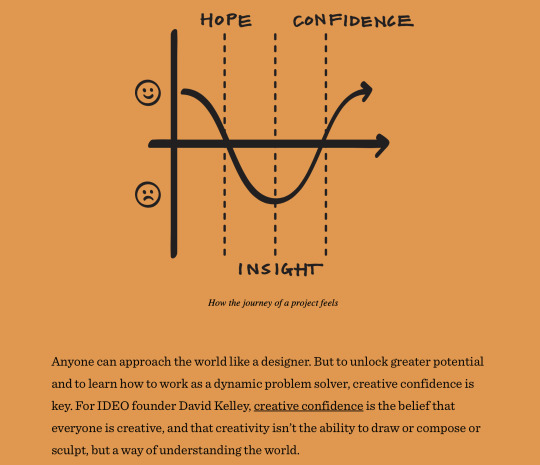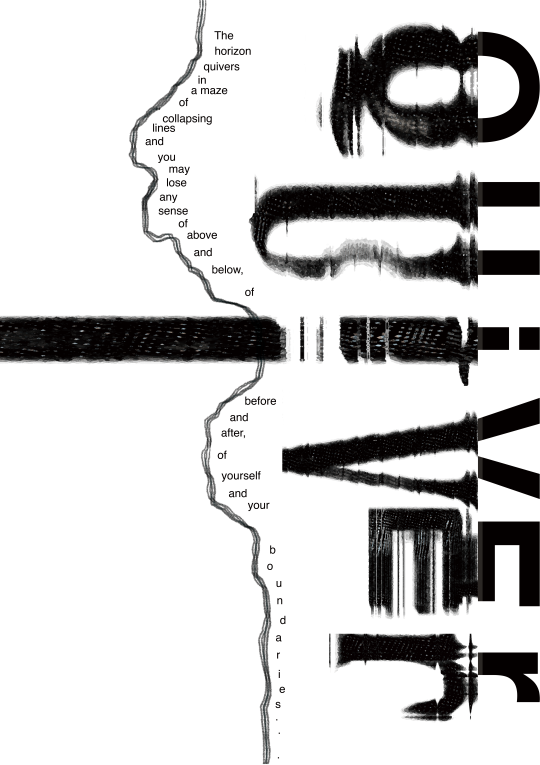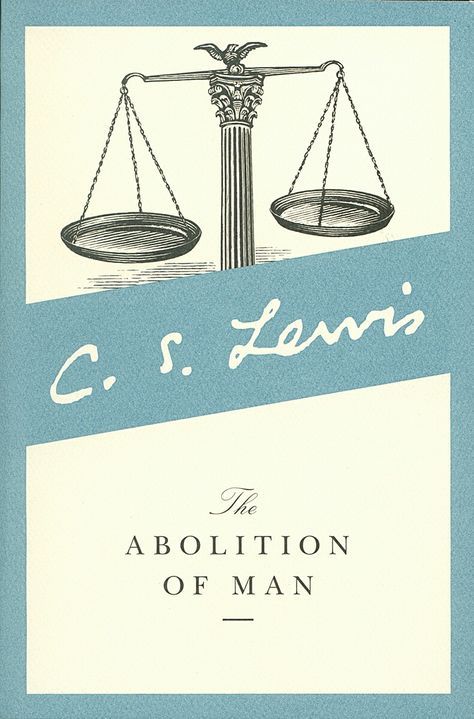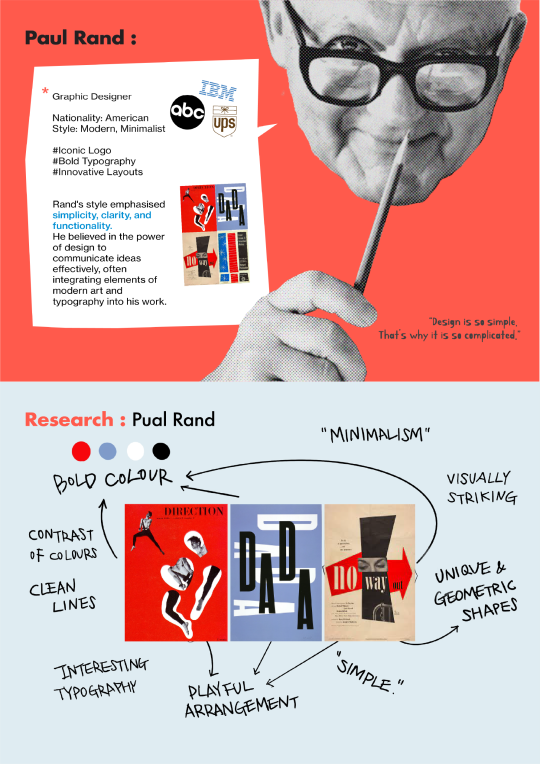Text
WOII Summary

My focus in WOII was viewing the world from various perspectives and identifying the connections between the world, myself, and design. This allowed me to understand my interactions with the world and to have an attitude of finding learning opportunities in everyday life.
Every week, I explored various references related to the topics. I applied the insights I gained from this experience to my design process. For instance, while analysing resources that could deepen my grasp of the project, I observed works from multiple perspectives. Furthermore, instead of just archiving works I found impressive, I strived to understand why they were effective. I aimed to identify 'which design elements were performing what role and conveying what message effectively'.
I also felt the importance of language while writing tumblr posts. I believe language is crucial not just as a means of expressing my ideas, but also in relation to the depth of my thoughts and design.
My perception of the world, shaped by my values, experiences, thoughts, and emotions is directly connected with my perception. I realised that the way I see the world is entirely within my control. Since my experience and perception shapes who I am, I would like to expand my understanding of design by observing various well-designed works and enriching my design learning.
(216 words)

References:
IDEO. "Design Thinking." IDEO, https://designthinking.ideo.com. Accessed 10 Apr, 2024.
#WOII#interaction#connection#multiple perspectives#design#design language#thinking skills#perception of the world#creativity#self exploration
0 notes
Text
WK11. Postmodernism
Engaging with the extraordinary style of postmodernism through poster design, I delved into its perspectives. Furthermore, I reflected on the impact of postmodernism on my design learning and social aspects.
I focused on the subjectivity of postmodernism and formed its relevance to my design learning. I realised that addressing big topics like society, culture, and the world is not the only creative and valuable endeavour; rather, tackling more comprehensive topics can begin from a personal perspective.
Like movie director Martin Scorsese's quote, "The most personal is the most creative," I realised the importance of valuing my experiences and thoughts, and making efforts to explore new ideas through them. His quote reminded me that design goes beyond simply fulfilling functional purposes; it is a process of creative expression through personal elements such as emotions, experiences, and social contexts.
Postmodernism can be discussed in a wide range, and I realised that my opinions differ when looking at it from artistic and social perspectives. I considered postmodernism in those two aspects, focusing that it denies absolute truth and values and respects diversity.
From an artistic aspect, it has a positive impact on promoting creativity by providing various perspectives. However, from a social standpoint, the standards of value judgement can become ambiguous due to the absence of absolute truth and values. This, in turn, could result in societal confusion and unrest. It was intriguing to feel the complexity and chaos even while observing postmodernist graphic posters. It allowed me to sense the interconnectedness between societal and artistic contexts and the interactions within the diverse contexts of postmodernism.
(263 words)
A movie director Martin Scorsese's quote
"The most personal is the most creative." _ Martin Scorsese
I thought of Martin Scorsese's famous quote in terms of postmodernism emphasising individual expression and interpretation. His quote suggests that creativity flourishes when it stems from personal experiences, emotions, and perspectives rather than adhering to conventional norms or standards.


References:
Scorsese, Martin. "The most personal is the most creative."
Covenant Books. "The Abolition of Man book cover." Covenant Books, 2022, https://covbooks.com/products/abolition-of-man.
Pinterest. "A huge haul of Memphis design is up for auction at Wright", Pinterest, https://www.pinterest.co.kr/pin/345932815136838635/. Accessed 11 April, 2024
#extraordinary#postmodernism#diversity#subjectivity#personal perspective#absolute truth#value#fragmentation#vibrant colours#bold style
0 notes
Text
WK10. Poststructuralism
Post-structuralism promotes a deep understanding of reality through diverse interpretations. In this regard, I reflected on the MBTI personality assessment, which has become popular in Korea. MBTI categorises individuals' personalities and behaviour patterns into 16 types, offering amusement and aiding in understanding oneself and others more easily. However, some people tend to overly generalise and judge individuals solely based on MBTI, forming stereotypes and prejudices.
Through this, I understood the positive impact of deconstruction on our cognition and perception. It reminds us that we can't entirely define a person by a specific type and necessitates acknowledging their flexibility and engaging with them from various perspectives. Deconstruction allows us to uncover new meanings in previously defined concepts. This broadens our perception, stimulates critical thinking, and enables richer interactions with the world.
In design as well, deconstruction plays a crucial role in problem-solving and creative activities by dismantling and recombining existing thoughts and values. By re-thinking conventional design approaches, we can generate new design ideas and, through considering various perspectives on problems and dilemmas that arise during the process, we can find deeper solutions by restructuring the relationships between design elements.
Additionally, deconstruction is crucial in design, particularly in language use and communication. It helps to deeply understand the messages conveyed by each design element and their interactions, enhancing effective communication. This provides flexibility and provides new perspectives when it is difficult to break free from the reference’s style and generate new ideas. This approach aids in identifying innovative solutions and understanding the context and significance of design work.
(257 words)
Thomas Heatherwick's interview
Thomas Heatherwick is a renowned British designer, globally recognised in various fields such as architecture, urban planning, furniture, and product design. Rather than following the traditional academic design that only emphasises aesthetic standards or functionality, he undertakes various global projects with unique artistic approaches and design thinking.
In his interviews, I could sense his creative thinking, as he offered unexpected answers. In one interview, he responded with the ambitious idea of building a prison for things not yet attempted. Despite the negative impression that the word "prison" brings in his interview, he expressed his desire to redefine traditional architecture, from which I could sense post-structuralism.

References:
"Thomas Heatherwick Interview: The Designer Talks About the Furore Surrounding the Garden Bridge." The Independent, www.independent.co.uk/news/thomas-heatherwick-interview-the-designer-talks-about-the-furore-surrounding-the-garden-bridge-a6721861.html.
#poststructuralism#deconstruction#perception#cognition#communication#re-think#recombination#diverse perspectives#creative solutions
0 notes
Text
Wk04. How to Analyse a Work of Design
Wk05. Field trip to National Museum of Singapore
Analysing a work involves more than just appreciating it. It includes understanding the elements and techniques used in the work in depth and interpreting their meanings. While learning the analysis framework, I recalled analysing the designers and illustrators for the trading card design project in Studio class. The understanding of their work style helped me explore their intention of their works.
I realised that artworks do not exist in isolation but interact with other elements such as their placement and lighting. By immersing myself in the era and cultural context to which the artwork belongs, I was able to gain a deeper understanding and appreciation of the culture and art of each country.

The analysis of the 'Silver Epergne' made me realise that the design embodies the historical and cultural context of that time period.
Process & Purposes : The Silver Epergne was made by London silversmiths Rundle, Bridge & Rundle. It has three branches to hold candles and a centre crystal bowl is for holding fruit. Such ornamental centrepieces were typically displayed to decorate the dinner tables of well-to-do families in England to show off their wealth.
Subject Matter & Meanings : The Epergne was presented to Lieutenant-Colonel William Farquhar as a parting gift from Singapore’s Chinese community. It signifies his popularity with the Asian communities that he governed in Singapore.
Choice & Uses of Medium : It was made of silver and crystal. Depending on the use of the epergne, luxurious and shiny materials were chosen. The stand part is made of silver and the bowl is made of crystal, making use of appropriate materials for each part.
Aspects of Form : Overall, it forms a curved shape with delicate patterns repeatedly engraved on both glass and silver. It shines as it reflects light, a characteristic of both materials. It forms a balanced shape in parallel with the two branches.
(304 words)

#analysis framework#form#material#meaning#process#context#National Museum of Singapore#cultural context#historical context#design elements
0 notes
Text
WK02. Aesthetics
I was able to gain a new perspective on design approaches and strategies by exploring how design and aesthetics interact and how form and function interact. And I was able to understand the impact of cultural elements on aesthetics.
I observed clip art at the Hocker Centre for class activity, and they were designs that emphasised functional elements of design, considering user convenience and spatial characteristics. Also, I could see that the design of the clip art is related to cultural background. I was able to explore the cultural aspects of design, understanding the aesthetic sense and values of various cultures.
Culture is a major factor that shapes and influences design. The culture of each country encompasses unique values, beliefs, customs, history, and art, all of which greatly impact the aesthetic sensibilities of that country. For example, Korean aesthetics are influenced by Eastern philosophy, emphasising beauty, harmony, and balance with nature. In Korean, the word for 'beautiful' translates to 'being oneself.' In this context, beauty signifies expressing one's own values and personality. Design approaches that consider these cultural elements can enhance user experience and facilitate effective communication.
Through this class, I deeply contemplated my own aesthetics, and clarified my thoughts on 'good design'. My aesthetics centre around 'harmonious', and to me, a good design has a 'balance' of form and function, which is achieved through the balance of design elements such as arrangement and colour. It was impressive that exploring aesthetics leads beyond simple visual beauty, understanding and expressing deep meaning and emotions. Through these experiences, I will effectively use my own aesthetics to lead effective communication through designs that enable emotional interactions with people.
(275 words)

youtube
2. Exploring Beauty: Perspectives from Mark Rigley's Discussion
In this video, Mark Rigley argues that beauty is formed through subjective, scientific, objective aspects, and cultural influences, and understanding this is important in design and art. He discusses how beauty influences human experience and perception, and through this, he suggests the possibility of comprehensively understanding beauty and creating new experiences through design and art.
His argument can also be understood from the perspective of phenomenology, which explores subjective experiences, including beauty or aesthetic experiences
References:
Pinterest. "Traditional Korean Hanok House." Pinterest, www.pinterest.co.kr/pin/924152786012484916/. 11 Apr, 2024
“Beauty works -- objectivity, aesthetics & design | Mark Rigley | TEDxKanata.”YouTube, uploaded by TEDx Talks, 11 Apr, 2015, https://youtu.be/wRdq-CU3xu8?feature=shared.
0 notes
Text
WK01. Phenomenology
Phenomenology is a philosophical approach that delves deeply into experienced phenomena, emphasising lived experience. It shares a connection with art, which keenly observes and articulates the abstract emotions we perceive and feel. This link between phenomenology and art is found in the exploration of the inherent meanings and values of objects or events we experience, and in shedding light on our understanding and interaction with the world.
Individuals understand the world through emotions and experiences, and this differs from person to person. Despite the same theme of 'shadow and time' in class activities, colleagues presented different interpretations. I could feel that an individual's experiences, perceptions, and emotions greatly influence the way we understand and perceive the world. Furthermore, I realised that recognising each other's differences can help us understand the diversity of the world, and expand the range of imagination and thought.
I believe that understanding phenomenology can provide various values to my design studies. Art is an important means of understanding and expressing our cognition and interaction with the world. Especially, design emphasises the importance of language and communication, and deeply explores users' interactions and experiences. In this regard, phenomenology provides a deep insight into how we understand the world and express it through design, which helps to improve creativity and expressiveness as a designer. Also, it can help me think deeply about what my personal desires and values mean to me, understand myself, and set goals for the future.
(241 words)

youtube
2. Who decides what art means?
: As with Phenomenology, in this video, Hayley Levitt explains that the meaning and value of artwork can vary depending on individual and subjective experiences. She emphasises that art can be interpreted differently according to each person's perspective and experience.

References:
2. "Who decides what art means? - Hayley Levitt." YouTube, uploaded by TED-Ed, 27 Nov. 2018, https://www.youtube.com/watch?v=HoXyw909Qu0.
3. "The Wilderness Downtown." www.thewildernessdowntown.com. Accessed 2 Apr, 2024.
0 notes